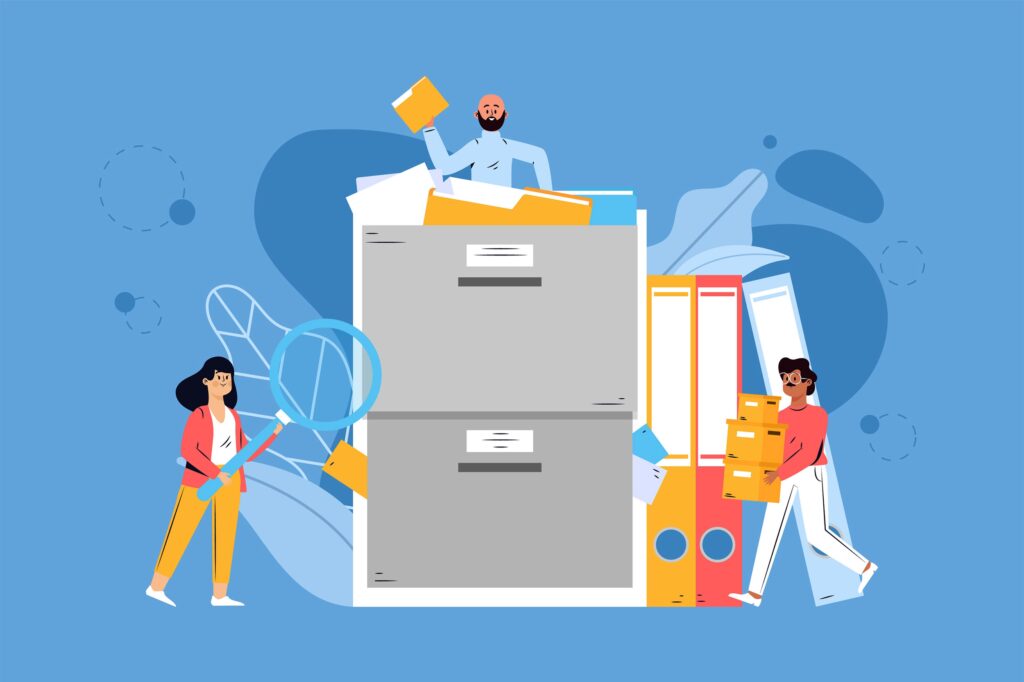
The legal world runs on documents. From case files and contracts to discovery records and client correspondence, law firms generate and handle thousands, sometimes millions of records each year. But with that volume comes the risk of disorganization, inefficiency, and confidentiality breaches.
That’s where a Legal Document Management System (DMS) becomes invaluable.
Designed specifically to meet the needs of law practices, a legal DMS streamlines file access, boosts collaboration, and strengthens compliance with confidentiality standards—all while saving time and money.
In this post, we’ll explore how law firms can transform their operations by adopting a secure, efficient document management system tailored for legal professionals.
Why Traditional File Management Fails Law Firms
Many law firms still rely on:
- Physical case folders and cabinets
- Shared drives with unclear file structures
- Emails as document storage
- Multiple, conflicting versions of the same file
- Manual tracking of document retention schedules
These methods may have worked at one time, but they now lead to:
- Lost or misfiled documents
- Slow response times to clients and courts
- Version control issues
- Risk of data exposure or noncompliance
- High labor costs tied to manual filing and retrieval
What Is a Legal Document Management System?
A Legal DMS is a software platform built to organize, track, secure, and manage documents within a legal workflow.
It centralizes all case-related files—scanned or digital—and allows law firms to:
- Access and retrieve documents instantly
- Control who sees or edits what
- Track activity for compliance
- Collaborate across teams and locations
- Automate retention, review, and destruction schedules
Key Features of a Legal Document Management System
1. Case-Based File Organization
Organize files by client, matter, or case ID so every document is easy to locate and linked to the appropriate legal action.
Example: Discovery files, motions, and correspondence are grouped by case and accessible from a single dashboard.
2. Advanced Search & OCR
Use full-text search across scanned documents, PDFs, and Word files—even if you don’t remember the file name.
Bonus: OCR (Optical Character Recognition) ensures even scanned physical files are searchable.
3. Role-Based Access Control
Assign document permissions based on role, matter, or team—ensuring paralegals, associates, and partners see only what they need.
This helps maintain client confidentiality and compliance with legal ethics rules.
4. Version Control & Check-Out/In
Automatically track changes, save prior versions, and prevent users from editing the same document simultaneously.
No more: Contract_v4_FINAL_FINAL_UseThisOne.docx
5. Audit Trails & Activity Logs
Gain visibility into who accessed, changed, or shared a file—critical for demonstrating due diligence and ethical compliance.
Great for:
- Internal quality control
- Litigation hold tracking
- Responding to audits or data requests
6. Secure File Sharing
Share sensitive files with clients, co-counsel, or opposing counsel using password-protected links, expiring access, or client portals.
This replaces risky practices like emailing confidential PDFs or using generic cloud folders.
7. Legal Retention & Destruction Rules
Automatically archive or purge documents based on legal hold requirements and retention schedules.
Reduce liability, avoid over-retention, and stay in line with ABA Model Rules and local bar guidelines.
Benefits of Implementing a Legal DMS
Better Case Preparation
Attorneys and paralegals can instantly locate key documents, improving preparation for hearings, discovery, and client meetings.
Improved Security and Confidentiality
A DMS helps protect client data from breaches, accidental leaks, and unauthorized access—critical in a post-GDPR world.
Faster Turnaround Times
Clients expect speed. With automated filing, version tracking, and digital workflows, law firms can meet deadlines and exceed expectations.
Reduced Operational Costs
Cut down on paper, storage, and administrative labor with digitized records and automated workflows.
Getting Started: Steps to Streamline Your Legal Documents
- Assess Your Current Document Setup
What formats do you use? Where are documents stored? Who accesses what? - Digitize Paper Files with Legal Scanning Services
Start with active case files and high-value archives. - Define Document Access Roles
Map permissions by team, title, or case involvement. - Choose the Right Legal DMS
Look for platforms with legal-specific compliance, audit, and search features. - Train Your Team
Ensure buy-in with role-specific training and ongoing support.
In law, organization is power. A Legal Document Management System doesn’t just clean up your file structure, it gives you control, security, and speed in every matter you handle.
If your firm is still relying on folders, PDFs, or scattered drives, it’s time to modernize. The right DMS can help you do more with less, protect your reputation, and serve clients better than ever.
Need help streamlining your law firm’s files? Talk to our team →



